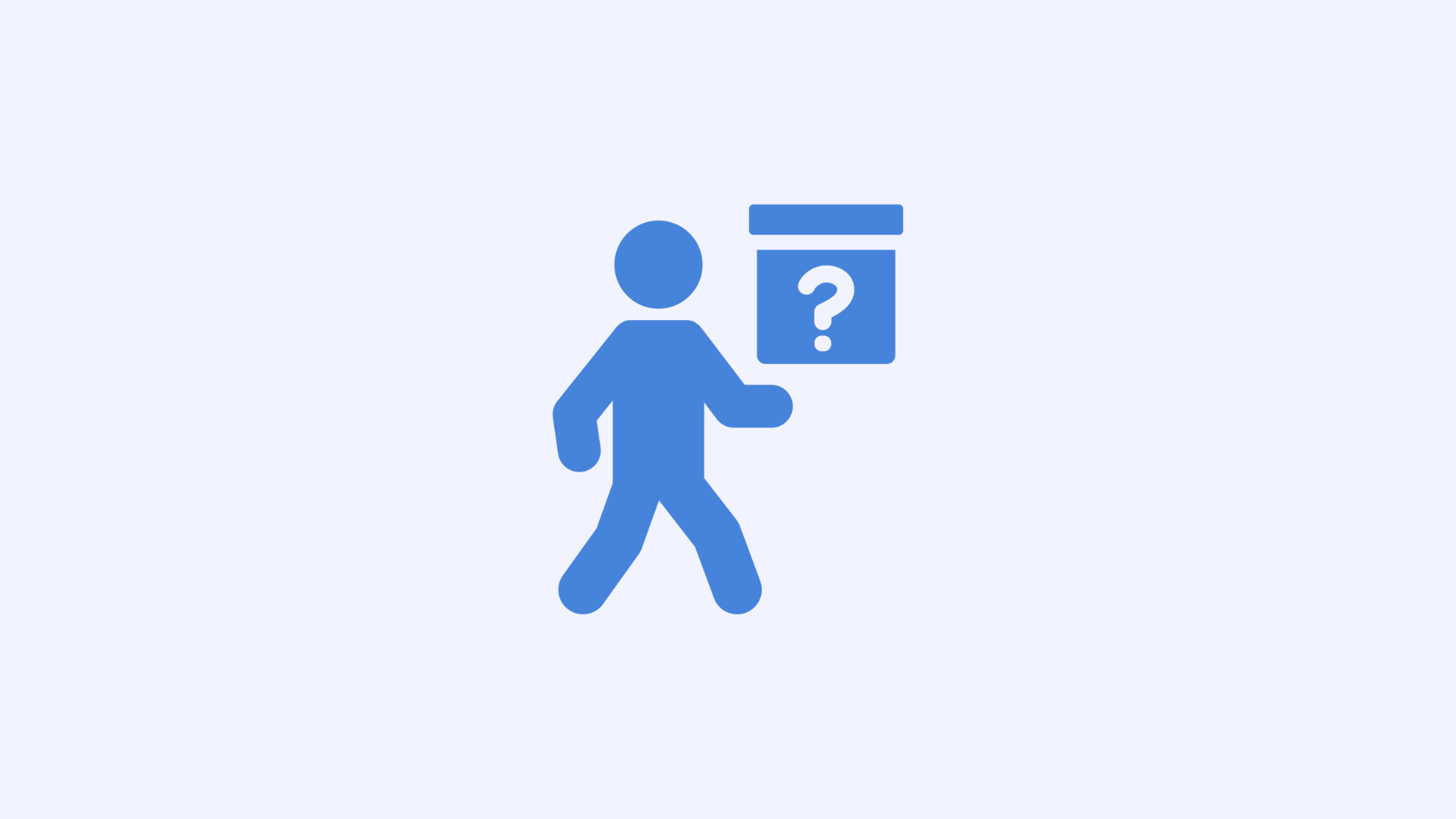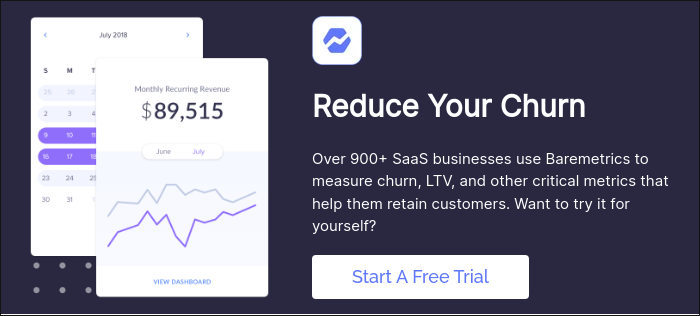Table of Contents

How Identifying Users At-Risk Can Minimize Revenue and Customer Churn
Let's discuss the importance of reducing different types of churn for revenue growth.
Churn is basically the speed at which you lose business. (You can see how to calculate churn for details.) It is usually represented as a percentage. There are different types of churn, including gross and net churn, revenue churn, and customer churn. Let’s review the differences between revenue churn and customer churn.
1. Revenue Churn
Revenue churn is the amount of monthly recurring revenue (MRR) you are losing due to cancellations and downgrades each month. You can calculate revenue churn using the following equation:
Revenue Churn = ((Churn MRR + Contraction MRR)) ÷ MRR at Start of Month) × 100
Note that Churn MRR is the MRR lost from cancellations, while Contraction MRR is the MRR lost from existing customers due to downgrades.
While I’m focusing on customers in this article, revenue churn should also be considered because not every customer is equally valuable to your company. You should always focus on the most valuable customers when you have limited resources. Calculating LTV for churn can help with this.
Baremetrics provides a broad overview as well as daily breakdowns into revenue churn. Take a look:

2. Customer Churn
Customer churn is the percentage of customers that are leaving your service per month. It can be calculated using the following equation.
Customer Churn = (Customers Lost During the Month ÷ Total Customers at the Start of the Month) × 100
What Should You Do About Customers at Risk of Churn?
Fundamentally, your goal with customers at risk of churn is to keep them using your product. You can do this by targeting the right customers in the first place, providing them with a high-quality service tailored to their needs, and continually tracking their user behavior for indications of displeasure.
I will address these actions in order, so that by the end, you will have an effective strategy starting with marketing and continuing on through the entire customer lifetime.
Sign Up the Right Customers
Do you have a well-defined ideal customer profile (ICP)? If you don’t know what that is, stop and check out the article. You should plan your entire marketing strategy around a specific ICP.
If your product has broad appeal, developing multiple specific ICPs is better than one ICP that is too broad. Refining an ICP and targeting only prospects who match this profile will curb your churn rate before your customer signs up.
That’s because the right customers can extract the most value from your product. As long as customers profit from your app, they will remain subscribed and you can reduce SaaS churn.
Strive for Meaningful Engagement
Starting from the moment you get a lead, you should use all available tools to encourage customers to integrate your product into their business processes.
During the free trial period, start sending emails to your prospective clients, pointing out interesting features, explaining how to use your platform, and nudging them back to your site to try the tools.
By getting your clients to use the features of your SaaS product to their full potential early and often, you guarantee that they are getting as much value as possible from your product.
Track User Behavior Data
Keep track of all the available user behavior data. This information lets you know which features your users are getting the most value from.
Your marketing, sales, and customer success teams should be engaging with your clients on a regular basis and encouraging them to interact with your platform.
Meanwhile, your data analytics and dev teams should track and map how users interact with your platform. This will help your dev teams optimize the parts of the platform that are most used.
This process is an invaluable feedback loop:
- You track how customers use your platform.
- You further develop the platform based on market demands.
- You proceed to market to a population that needs those features (specific ICPs).
Behavior data is an important part of a churn analysis, which can be helpful in identifying all potential causes of churn.
Keep Track of Payment Information
Some customers will realize that your product isn’t for them and leave. However, a proportion of customers actually churn involuntarily.
Involuntary churn occurs when a customer leaves your platform not by choice but because of another issue, such as a credit card payment failure.
Baremetrics’ Recover tool - which leverages dunning management for churn can help you prevent involuntary churn by activating automatic processes to get clients to go back and fix their payment issues. Take a look:

Keeping an eye on unopened credit card details through update emails can help you identify customers at risk of churn. You can then execute other strategies to encourage users to actively use your product.
Recover automates your dunning process, so you never have to worry about losing customers involuntarily. Recover’s payment processor can be fully integrated into your Baremetrics dashboard. The best part? It pays for itself – on average, Recover makes back 38x what it costs. Try it as part of your Baremetrics free trial today.
Use Customer Segmentation to Develop Re-engagement Plans
Not every customer is the same, however, groups of customers who share certain characteristics such as geographic location, or choice of subscription tier, exhibit similar user behavior.
Working with these cohorts separately can help you develop re-engagement plans that work best for each group. For example, if your customers in America seem to be more active than those in Canada, you can try and figure out why the Canadians are not getting as much value out of your platform.
Baremetrics Segmentation can do all of this for you. Take a look:

Baremetrics’ Cancellation Insights can also be useful here. This tool helps you better understand what’s causing different customers to cancel, including calculating lost revenue by cancellation reason. You may notice different audience segments have different reasons for churn, which would require unique re-engagement strategies.
Identify customers at risk of churn with Baremetrics
The business growth principles are simple: sign up and retain as many customers as possible. It is possible to actively achieve a negative churn rate, where you attract more customers than you lose.
The more you learn about your customers and how they interact with your product, the better you can retain happy customers.
Baremetrics offers more than 26 separate metrics to track and segment your user information. These tools can help you adapt your product to customer needs, reduce churn among current users, and identify and attract your ICPs.
Tired of wasting time on spreadsheets? Get a free trial of Baremetrics today!




